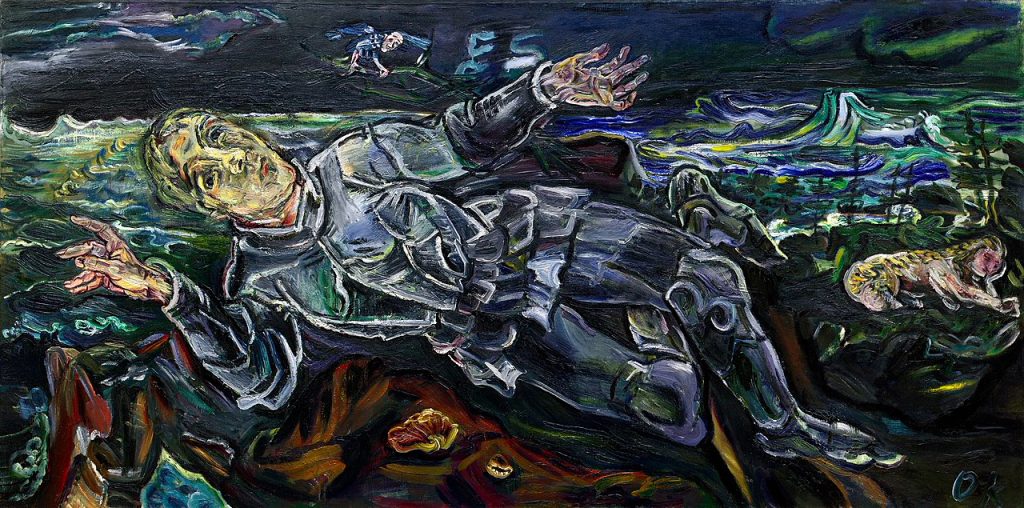Manjeera
March 1, ON THIS DAY
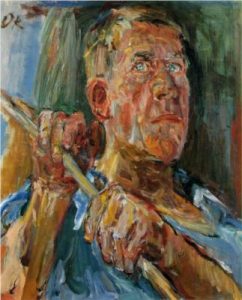
Courtesy: Wiki Art
Oskar Kokoschka, an Austrian painter and author is remembered for his expressive paintings and drawings that convey the brutality of human emotions in their rawest form. He was a leading figure in the Expressionist movement in Austria and Germany in the early 20th century and his paintings focused on canvassing psychological landscapes. Kokoschka was persecuted by the Nazi regime due to his Jewish heritage and unconventionally emotional art which the Nazis saw as a threat to the ideology of the regime. His artworks were consequently branded as ‘degenerate’ and were removed from public display. Kokoschka had to flee the country and take asylum in London. Despite this rigorous persecution, Kokoschka did not lose his artistic passion and continued to delve deep into the human psyche through his paintings, exploring the limits of Expressionism.
Kokoschka’s early years and fascination with the human figure
Kokoschka’s life was full of struggle and it started when he was a three-year-old toddler. His father’s business went bankrupt and the family had to move to Vienna, surviving on limited means. His older brother soon passed and even as a young child, Kokoschka was exposed to grief and pain. His first artistic inspiration came from the Baroque frescoes and panels from the Piarist Chruch, where he used to sing in the choir. The excess and the opulence of these frescoes will be inherited in Kokoschka’s art, albeit in a much more twisted way.
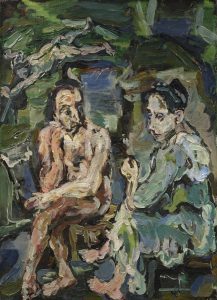
Courtesy: Southebys
After getting a scholarship, Kokoschka was able to attend the School of Arts and Crafts in Vienna where he would go on to become a teaching assistant. He made himself busy learning bookbinding, lithography and explored other artistic forms. Kokoschka was not satisfied with the school and its single-handed dedication to decorative arts. He was more interested in the human, observing in detail the formation and structure of the human figure. He used to make quick sketches of the human anatomy, but couldn’t pursue this avenue due to financial constraints. His interest, even in the early days, remained centered on the human, resulting from his own concerns and empathy for the people around him.
Exploring emotion through line and form
Architect Adolf Loons showed interest in Kokoschka’s work and provided him with financial patronage as well as emotional support. This allowed the artist to truly explore his artistic capabilities and develop his techniques. As usual, Kokoschka’s interest remained rooted in the exploration of the human form and psyche, and he worked to develop his unique style so that he can convey complex emotions and psychological states. His deeply humanist philosophy engrained itself in his artistic style as he continued to hone his talent; he even wrote a play in 1907 called Mörder, Hoffnung der Frauen, expressing his concerns regarding the political injustices in Europe.

Courtesy: Wiki Commons
He started to explore portraiture around 1908, where he painted deeply poignant paintings that expressed the subject and their psychological essence. He embedded great emotion in every brushstroke and tried to use a mixture of colors to represent the deeply unsettling psychological landscapes of people. This attempt to capture the residuality of consciousness often led to exaggerated features and absurd anatomical figures. His strokes went on to express more color and Kokoschka used heavier outlines to enclose various subjects. One of his signature techniques was to apply thick layers of paint to the canvas, creating a textured surface that added depth and dimension to his works. Kokoschka’s masterpiece, The Tempest, also called The Bride of the Wind painted in 1914, showcases the development of his style.
The ‘Degenerate’ Anti-war Art
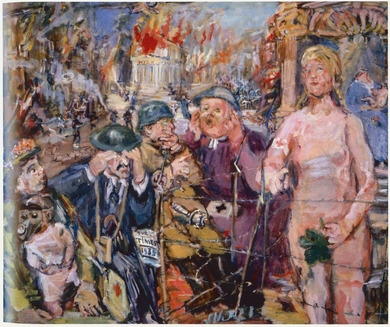
Courtesy: Bild-Kunst, Bonn
As his work developed and Kokoschka became well-recognized, he started to take on more political commissions. He taught as a professor of fine arts at Dresden and openly expressed his progressive alignments. At the peak of the Nazi dictatorship, Kokoschka’s art was marked as ‘degenerate’ and his work was removed from all German museums. The fall came even faster than the artist could have anticipated; within a few years, he was reduced to near poverty as he struggled to keep himself afloat during his exile in London. He started using watercolors over oils, as they were a significantly less expensive medium. He continued to paint art-war-themed paintings despite the persecution and threat to his life. An example of this can be found in What We Are Fighting For (1943) and Anschluss—Alice in Wonderland (1942).
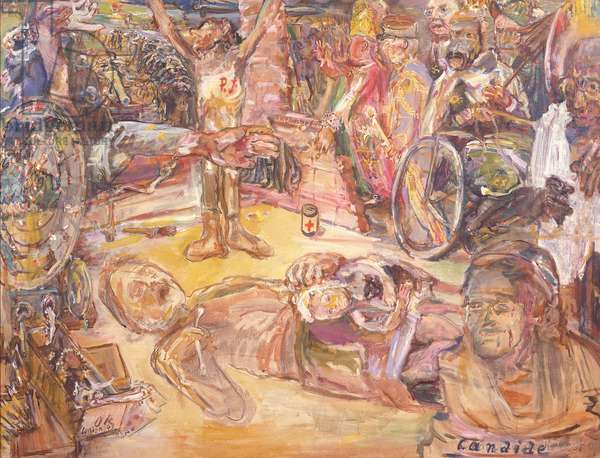
Courtesy: Bridgeman Images.
Despite these hindrances, Kokoschka continued to paint and went on to host several exhibitions. He remained committed to his artistic vision. Trying to give concrete form to the inescapable trauma that lingers and engraves on the soul. His work has since been recognized as an important contribution to the history of modern art, and his legacy as a brave and innovative artist who defied oppressive regimes continues to inspire artists and viewers around the world.
References:
https://www.britannica.com/biography/Oskar-Kokoschka
https://www.sothebys.com/en/artists/oskar-kokoschka

